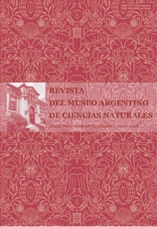Palinoflora y ambiente en el Terciario del nordeste de Tierra del Fuego, Argentina.
Resumen
Palynoflora and paleoenvironment in the Tertiary, northeast of Tierra del Fuego, Argentina. Palynological samples from the Cullen Formation (Late Oligocene to Middle Miocene), exposed in the northeast coast of Isla Grande de Tierra del Fuego (southernmost Patagonia), are studied. Eighty six palynomorphs are identified and referred to the following algae, bryophyte, pteridophyte, gymnosperm and angiosperm families: Botryococcaceae, Zygnemataceae, Hydrodictyaceae, Anthocerotaceae, Sphagnaceae, Bartramiaceae, Ricciaceae, Hymenophyllaceae, Adiantaceae, Lophosoriaceae, cf. Cyatheaceae, Ophioglossaceae, Isoetaceae, Lycopodiaceae, Aspleniaceae/Dennstaedtiaceae, Araucariaceae, Podocarpaceae, Taxodiaceae/Cupressaceae, Rosaceae, Apiaceae, Berberidaceae, Chenopodiaceae, Onagraceae, Sapindaceae, Empetraceae, Polygonaceae, Proteaceae, Gunneraceae, Haloragaceae, Malvaceae, Celastraceae, Misodendraceae, Asteraceae, Myrtaceae, Fagaceae, Rubiaceae, Winteraceae, Ranunculaceae, Menyanthaceae, Cunoniaceae, Cyperaceae, Poaceae, Sparganiaceae/Typhaceae. Fungal remains are abundant. Dinoflagellate cysts are present in lower levels. The palynoflora and sedimentary data indicate a regional multistratified forest dominated by Nothofagus and Podocarpaceae, a well-developed herbaceous understorey and local occurrence of freshwater, semiaquatic and coastal communities, growing under moist and warm temperate conditions.
Texto completo:
PDFEnlaces refback
- No hay ningún enlace refback.

This work is licensed under a Creative Commons Attribution 3.0 License.

